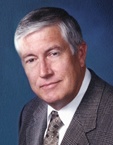 by Ernest N. Curtis M.D. (Internal Medicine and Cardiology)
by Ernest N. Curtis M.D. (Internal Medicine and Cardiology)The burden of proof in science always lies with those who propose a theory. In this case the claim is that cholesterol is one of the chief causative agents for atherosclerosis.
Since the burden of proof is on those making the claim, we need only rebut their arguments. We don’t have to prove anything or advance an alternative theory.
The claim that cholesterol causes atherosclerosis can be rebutted on many levels. I don’t give much credence to epidemiologic evidence, but even that doesn’t pass scientific muster when it comes to cholesterol.
The correlations between cholesterol and heart attacks (the chief complication of atherosclerosis) cited in the medical literature are not even high enough to suggest an association between the two, much less a significant correlation. Even a high degree of correlation would not prove causation but the figures are nowhere near that level.
Another fly in the epidemiological soup is the fact that the incidence of heart attacks is fairly evenly distributed throughout the entire range of blood cholesterol levels. In fact more than half occur in those with cholesterol levels in the low normal range.
Many people with very high cholesterol levels live long healthy lives with no signs of complications from atherosclerosis. Conversely, many people with relatively low levels of cholesterol suffer from severe atherosclerosis and its complications. Add to that the fact that women have, on average, significantly higher cholesterol levels than men yet suffer far fewer heart attacks and I think we can conclude that the so-called evidence from epidemiology is nonexistent.
Many proponents of the cholesterol theory cite some of the statin drug trials as proof of the significance of cholesterol as an important factor by showing that reduction of its blood level provides a small degree of protection against heart attacks.
But these studies all showed a lack of normal response/exposure. There was a total disconnection between the small degree of outcome improvement and both the initial cholesterol level and the degree of cholesterol lowering attained. That is, the same small amount of benefit (which was so small as to be of no practical significance) was seen in subjects whose cholesterol declined only slightly and those in whom it declined a lot.
The benefit was also the same for those with low initial cholesterol levels and those with high initial levels. In scientific studies, this disconnection means that the factor being studied is not a cause of the outcome in question and that some other factor is at work. In this case it is possible that the anti-thrombotic action of the drug is the cause since the degree of protection against heart attack was almost identical to that seen in similar studies using aspirin or other anti-platelet drugs.
On the pathophysiologic level there are many reasons to doubt that cholesterol plays a causative role. Researchers have shown that some of the initial signs of atherosclerosis can be seen in the arteries of infants. These changes are seen in the same areas of the arteries where atherosclerotic lesions tend to occur later in life and consist of subintimal thickening with no sign of cholesterol infiltration or inflammatory reaction.
While the significance of these early changes can be debated, it is hard to deny the significance of the fact that atherosclerosis is a very focal disease process. It is found in the large and medium sized arteries and almost never in the smaller arterioles, capillaries, and veins.
Moreover, within the large and medium sized arteries there is a marked predilection for lesions to occur at branching points and along the lesser curvatures of arteries. These are areas of maximum shear stress on the arterial wall. Often one side of an arterial segment may be severely affected while the opposite wall shows no evidence of atherosclerosis whatsoever.
Atherosclerosis is often found in the arteries of the lower extremities but rarely in the arteries of the upper extremities. Atherosclerosis is never found in the veins of the body. However, veins that are subjected to arterial pressures when used as bypass grafts or arterovenous fistulas constructed for dialysis shunts often show rapid development of atherosclerosis.
These and other facts would seem to negate the possibility that atherosclerosis was caused by a chemical circulating in the blood since that should bring about a more generalized and/or random distribution of atherosclerotic lesions.
The blood flow through the larger arteries where atherosclerosis is typically found is much more rapid and laminar than it is in the smaller blood vessels. One would think that a slower flow would allow a noxious chemical to do more damage rather than less if it were a causative agent.
Einstein said that an elegant theory could be completely refuted by one inconvenient contradictory fact. In the case of cholesterol and atherosclerosis, there is a cornucopia of such facts.
Dr. Ernest N. Curtis, M.D
=================================================================
Read the complete article here.
 By Duane Graveline, MD, MPH
By Duane Graveline, MD, MPH